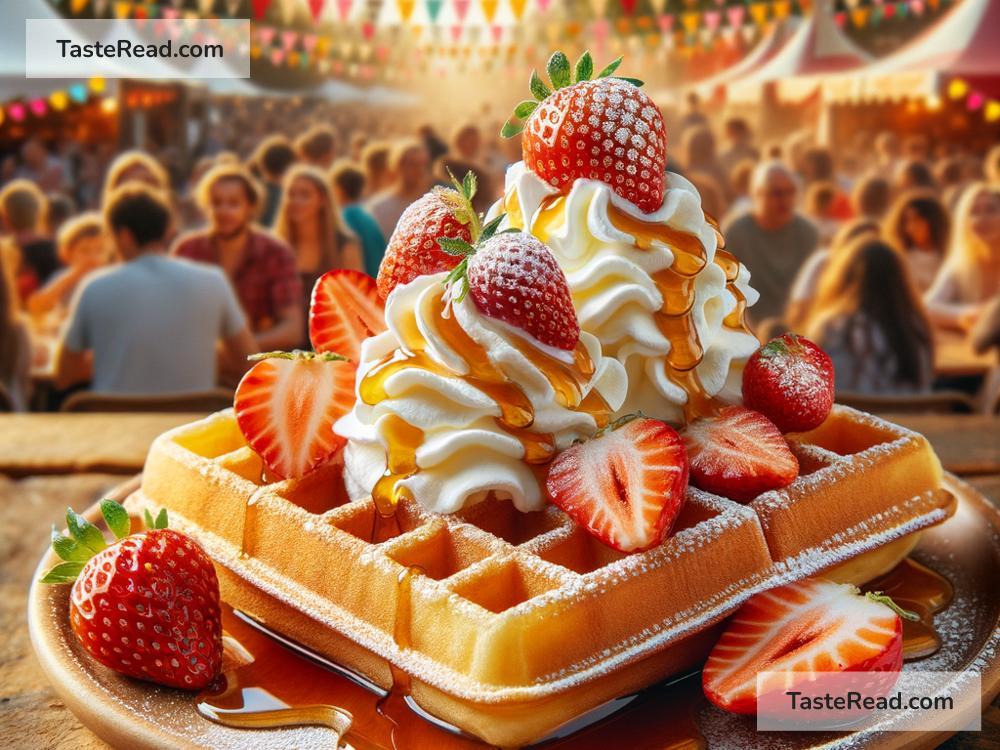Belgian Waffles: A Sweet Treat with a History Rooted in Festivals
Belgian waffles are one of the most loved breakfast or dessert treats in the world. Their golden, fluffy texture, deep pockets for holding syrup or whipped cream, and unique crispiness make them stand out from regular waffles. But did you know these tasty creations have a fascinating historical link to festivals? Let’s explore the story of Belgian waffles and how they became a central part of celebrations in Belgium and beyond.
What Are Belgian Waffles?
Belgian waffles are a type of waffle that originated in Belgium. They are larger than other kinds of waffles, like the ones you might find in the U.S., and they typically have deeper grooves. These grooves are perfect for holding toppings like fruit, chocolate, syrup, or powdered sugar. While today waffles are enjoyed in homes and restaurants worldwide, their roots trace back to ancient times.
The Origins of Waffles: A Medieval Delight
To understand Belgian waffles, we need to go back to the Middle Ages. During this time, waffles weren’t quite as refined or sweet as the ones we eat today. They were made from simple ingredients like barley and oats, and they didn’t include sugar. The batter was cooked between two iron plates, sometimes with decorative patterns engraved in them.
Waffles were often made and eaten during religious celebrations or festivals. In fact, medieval bakers created them as treats for special occasions like holidays or the arrival of spring. Since sweet foods were rare and expensive during that time, waffles felt like a luxurious indulgence for people to enjoy.
A Festival Staple in Belgium
Belgium has long been known for its love of waffles. In the 16th and 17th centuries, waffles became a common sight at festivals, markets, and fairs across the country. These events were joyous occasions filled with music, dancing, food, and laughter, and waffles became one of the highlights of these celebrations.
During festival days, street vendors set up carts and stalls, cooking fresh waffles on hot irons. The irresistible smell of waffles filled the air as people gathered to celebrate. Families often enjoyed waffles together, sharing them as a treat while watching performers or browsing local goods.
In Belgium, food plays a significant role in traditions, and waffles became more than just a snack— they became a symbol of togetherness. Eating waffles at a festival wasn’t just about satisfying hunger; it was also a cultural ritual, a way to connect with others and enjoy life’s moments of joy.
From Street Festivals to World Fame
The Belgian waffle as we know it today began to take shape in the 19th century. During this time, bakers in Belgium refined the recipe, introducing yeast-based batter for softer, fluffier waffles. It was also around this time that bakers started experimenting with adding sugar, turning waffles into the sweet delights we know today.
The modern Belgian waffle gained international fame through exposition fairs and events like the World’s Fair (Expo). A pivotal moment in waffle history happened in 1964, at the World’s Fair held in New York City. A Belgian baker named Maurice Vermersch made these waffles—originally known as “Brussels waffles”—at his stand.
Maurice chose to call them “Belgian waffles” because Americans were more familiar with Belgium than the city of Brussels. Visitors loved the waffles’ texture and flavor, as they were lighter and crisper than waffles commonly eaten in the U.S. From then on, Belgian waffles became a global sensation.
Belgian Waffles at Festivals Today
Even today, Belgian waffles remain deeply connected to festivals and celebrations. In Belgium, they are still served at local fairs, markets, and events during holidays. Cities like Liège and Brussels, home to their own variations of waffles, host food festivals where waffles are often the star of the show.
For example, Liège waffles are made with pearl sugar mixed into the batter. As the waffle cooks, the sugar caramelizes, giving the waffle a rich, sweet flavor. Liège waffles are often enjoyed on the go, making them a popular street food at festivals. On the other hand, Brussels waffles are lighter and more rectangular, making them perfect for toppings. Both varieties have found a place in festival traditions, whether served plain or dressed up with fruit, chocolate, and whipped cream.
Beyond Belgium, Belgian waffles continue to bring people together at events. From state fairs in the U.S. to food festivals in Europe, the unmistakable aroma of fresh Belgian waffles reminds us of their joyful origins. They carry with them a piece of history, uniting people with sweet flavors and festive spirit.
Why We Love Belgian Waffles
Belgian waffles have come a long way, and they still hold that special connection to celebrations. Whether enjoyed with family on a lazy Sunday morning or shared with friends at a busy carnival, Belgian waffles remind us of the importance of slowing down and enjoying delicious moments together.
Festivals across the world bring communities together, and Belgian waffles continue to play their part in making them even sweeter. So, the next time you take a bite of a golden, fluffy Belgian waffle, think about its journey through history—from medieval festivals to world fairs, and now to your plate!
Who knows? Maybe it’s not just the taste but the tradition behind it that makes Belgian waffles so irresistible.


